 A major quake such as the one that left at least 60,000 dead in southwestern China this month can trigger other earthquakes half way around the world, according to a study released Sunday.This unexpected finding could one day help make better predictions about the frequency and intensity of aftershocks, the lead researcher told AFP.A team of geologists in the United States found that 12 out of 15 major quakes-registering a magnitude of 7.0 or higher-since 1990 generated surface waves that set off smaller seismic events in fault systems on distant continents.The China quake, which measured 8.0 on the Richter scale, was not included in the study, which was published in the British journal Nature Geoscience."It was known that these surface waves could travel," explained co-author Tom Parsons of the US Geological Survey."But most scientists thought these so-called dynamically-triggered earthquakes were a special case. In fact they happen all the time, everywhere, and that was something of a surprise," he said in a phone interview.The terrible December 2004 mega-quake off the coast of Sumatra, Indonesia, for example, provoked seismic events as far away as Alaska, California and Ecuador.There is a better than 95 percent likelihood that the earthquake rate in distant areas will be much higher in the immediate aftermath of a big quake than before or after, the study found.And while the seismic movements triggered by far away quakes were generally smaller-in the three-to-five magnitude range-there is no reason they could not be as big or bigger than the first."They could be any size," said Parsons, who in previous research identified eight cases in the last quarter century in which a 7.0-or-bigger earthquake led to another that was even larger.To measure the impact elsewhere on the planet of major tremblors, Parsons and colleagues analysed broadband seismographs from over 500 stations, part of a worldwide monitoring network.By searching for the lowest frequencies and filtering out the highest, they detected a sharp increase in the number of distant quakes triggered by a main quake, even though the tectonic environment of the two regions were independent."The big question is aftershocks, and what happens after you have a big earthquake," said Parons, adding that there are two competing theories as to how such follow-on quakes are unleashed.Static triggering occurs within a few fault lengths of the main rupture, often in a cascading effect. But impact generally peters out beyond a 100-to-200 kilometre (70-to-140 mile) radius.The spike in quake activity further afield can only be explained by dynamic triggering, explained Parsons.Such seismic waves travelling along the surface of the earth "keep their amplitude and do not diminish that much even over great distances," he said.The key to predicting the aftermath of a quake such as the one in China will be teasing apart the role of static and dynamic triggering."We can look at the aftershocks and start to learn, but we need to know what percentage of those are dynamically triggered because the effect isn't lasting, it's transient," Parsons explained."Once those waves are gone, the effect is mostly over with, we really don't have to worry about that any more."
A major quake such as the one that left at least 60,000 dead in southwestern China this month can trigger other earthquakes half way around the world, according to a study released Sunday.This unexpected finding could one day help make better predictions about the frequency and intensity of aftershocks, the lead researcher told AFP.A team of geologists in the United States found that 12 out of 15 major quakes-registering a magnitude of 7.0 or higher-since 1990 generated surface waves that set off smaller seismic events in fault systems on distant continents.The China quake, which measured 8.0 on the Richter scale, was not included in the study, which was published in the British journal Nature Geoscience."It was known that these surface waves could travel," explained co-author Tom Parsons of the US Geological Survey."But most scientists thought these so-called dynamically-triggered earthquakes were a special case. In fact they happen all the time, everywhere, and that was something of a surprise," he said in a phone interview.The terrible December 2004 mega-quake off the coast of Sumatra, Indonesia, for example, provoked seismic events as far away as Alaska, California and Ecuador.There is a better than 95 percent likelihood that the earthquake rate in distant areas will be much higher in the immediate aftermath of a big quake than before or after, the study found.And while the seismic movements triggered by far away quakes were generally smaller-in the three-to-five magnitude range-there is no reason they could not be as big or bigger than the first."They could be any size," said Parsons, who in previous research identified eight cases in the last quarter century in which a 7.0-or-bigger earthquake led to another that was even larger.To measure the impact elsewhere on the planet of major tremblors, Parsons and colleagues analysed broadband seismographs from over 500 stations, part of a worldwide monitoring network.By searching for the lowest frequencies and filtering out the highest, they detected a sharp increase in the number of distant quakes triggered by a main quake, even though the tectonic environment of the two regions were independent."The big question is aftershocks, and what happens after you have a big earthquake," said Parons, adding that there are two competing theories as to how such follow-on quakes are unleashed.Static triggering occurs within a few fault lengths of the main rupture, often in a cascading effect. But impact generally peters out beyond a 100-to-200 kilometre (70-to-140 mile) radius.The spike in quake activity further afield can only be explained by dynamic triggering, explained Parsons.Such seismic waves travelling along the surface of the earth "keep their amplitude and do not diminish that much even over great distances," he said.The key to predicting the aftermath of a quake such as the one in China will be teasing apart the role of static and dynamic triggering."We can look at the aftershocks and start to learn, but we need to know what percentage of those are dynamically triggered because the effect isn't lasting, it's transient," Parsons explained."Once those waves are gone, the effect is mostly over with, we really don't have to worry about that any more."http://www.breitbart.com/article.php?id=080525173254.8uczuvwc&show_article=1
As in the days of Noah...

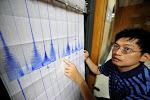
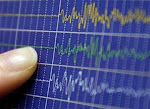
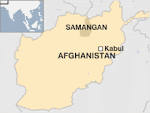






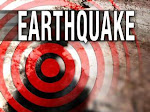
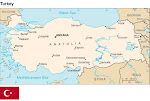
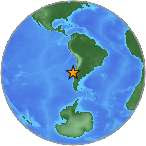




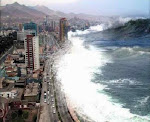

.jpg)


.bmp)
No comments:
Post a Comment